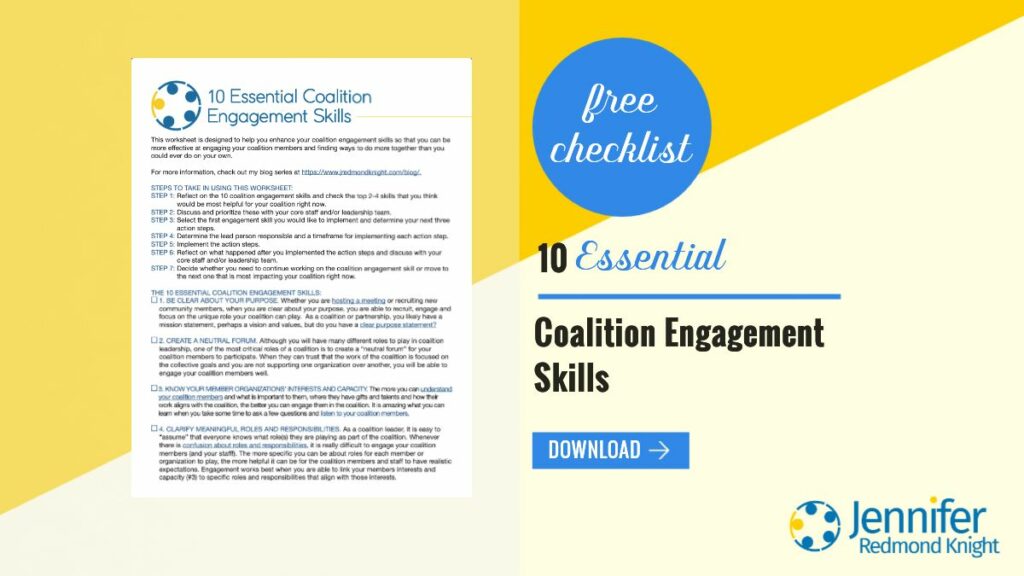Engagement is one of the most critical components of coalition work and it can also be one of the most challenging. With our busy and overwhelming schedules, finding ways to intentionally and successfully engage our coalition is incredibly important. When I first began leading coalitions, engagement primarily happened through in-person meetings and email communication. Now, our engagement approaches must reach our coalition members primarily through virtual platforms and find ways to break through constant distractions so that we can focus on working better together. Join me this week as I provide three recommendations to support high levels of coalition engagement.
Be observant.
When you want to engage your coalition members, you may begin from a place of frustration and discouragement. That is okay! If you want to encourage engagement, you need to begin by observing what is true about your coalition, particularly your coalition meetings. Are you finding that only a few people speak up during meetings and people are only presenting and reporting information rather than engaging in discussions? Or have you tried an approach that seems to be resonating with your coalition members (e.g. Zoom whiteboard or prompted chat questions)? When we take time to observe and pay attention to what is happening and what is not happening related to engagement, we will be in a better position to enhance engagement. If you are struggling with observing while leading, consider recording your meetings and asking for other staff or team members to pay particular attention to engagement during your coalition meetings. If you are still struggling to understand what is happening related to engagement, ask your coalition members to provide feedback. Create a short survey or host some small group or one-on-one meetings to assess engagement.
Be creative.
To engage your coalition members who may have different backgrounds, experiences, contexts and distractions, you need to think creatively. If this is not your strength, engage other staff or team members to help you think creatively. As you participate in other meetings or events that demonstrate high levels of engagement, take good notes about what they are doing to engage and consider how to apply this to your context. When developing your coalition meeting purpose and agenda, think of ways that may work to engage your coalition members that may be different from what you have tried previously. For instance, are you asking prompting and connecting questions as part of your discussions? Have you considered incorporating meeting polls or even a whiteboard? Perhaps you adjust how you conduct your meetings. Rather than presenting and discussing during the meeting time, perhaps you develop pre-recorded presentations that are shared and then you focus meeting time on discussion. One of my favorite communication and engagement gurus is Chad Littlefield with We and Me, Inc. and I encourage you to check out his resources that can spur additional creativity.
Be flexible.
As you observe and practice creative solutions to engagement, you will likely find some that work really well and others that do not fit for your workgroup or coalition at this time. If you are going to continue to engage your coalition members, practicing flexibility is an important skill. You may need to adjust how often you meet or when you meet. You may also need to divide your workgroups into smaller subgroups in order to more actively engage your participants. For some coalition members, email is a fantastic platform for communicating information, and for others, email gets lost in an overwhelming number of important and unimportant messages. While you cannot do everything for everyone all of the time, you can practice flexibility and make adjustments to what you do and how you do it in order to encourage engagement in your coalition. As you are practicing flexibility, remember to communicate clearly and consistently and observe how the flexibility is working to enhance engagement. Sometimes you can be too flexible and the group gets confused on what to expect and how to engage. Find the flexibility flow that works for you and your coalition and remember that it is completely okay when things do not work. This gives you an opportunity to try something new.
So what about you? What is your next step in enhancing engagement within your coalition?
If you would like additional support in this area, check out one of my free resources, 10 Essential Engagement Skills.

Photo by Łukasz Maźnica on Unsplash

